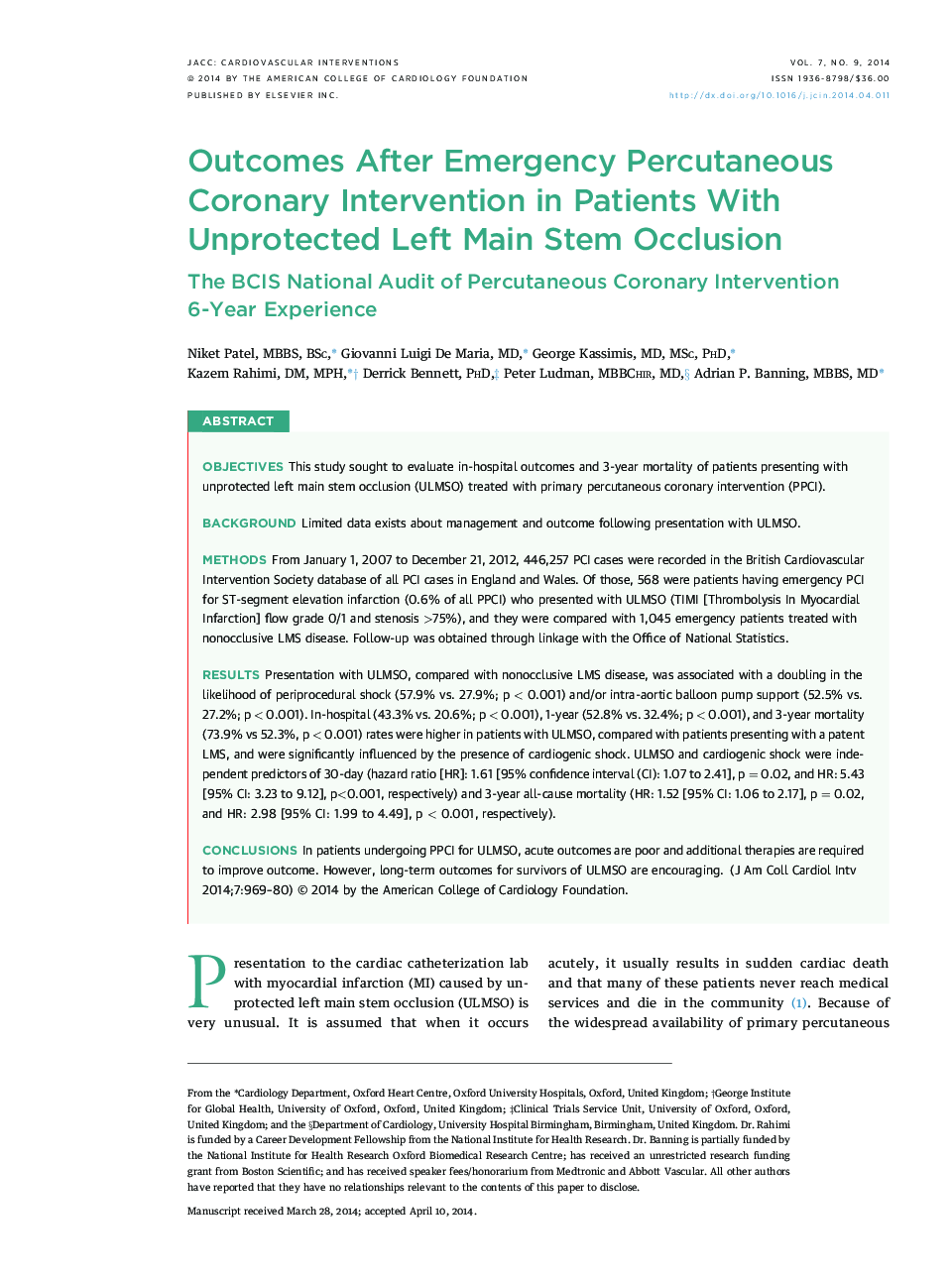| کد مقاله | کد نشریه | سال انتشار | مقاله انگلیسی | نسخه تمام متن |
|---|---|---|---|---|
| 2940061 | 1177012 | 2014 | 12 صفحه PDF | دانلود رایگان |

ObjectivesThis study sought to evaluate in-hospital outcomes and 3-year mortality of patients presenting with unprotected left main stem occlusion (ULMSO) treated with primary percutaneous coronary intervention (PPCI).BackgroundLimited data exists about management and outcome following presentation with ULMSO.MethodsFrom January 1, 2007 to December 21, 2012, 446,257 PCI cases were recorded in the British Cardiovascular Intervention Society database of all PCI cases in England and Wales. Of those, 568 were patients having emergency PCI for ST-segment elevation infarction (0.6% of all PPCI) who presented with ULMSO (TIMI [Thrombolysis In Myocardial Infarction] flow grade 0/1 and stenosis >75%), and they were compared with 1,045 emergency patients treated with nonocclusive LMS disease. Follow-up was obtained through linkage with the Office of National Statistics.ResultsPresentation with ULMSO, compared with nonocclusive LMS disease, was associated with a doubling in the likelihood of periprocedural shock (57.9% vs. 27.9%; p < 0.001) and/or intra-aortic balloon pump support (52.5% vs. 27.2%; p < 0.001). In-hospital (43.3% vs. 20.6%; p < 0.001), 1-year (52.8% vs. 32.4%; p < 0.001), and 3-year mortality (73.9% vs 52.3%, p < 0.001) rates were higher in patients with ULMSO, compared with patients presenting with a patent LMS, and were significantly influenced by the presence of cardiogenic shock. ULMSO and cardiogenic shock were independent predictors of 30-day (hazard ratio [HR]: 1.61 [95% confidence interval (CI): 1.07 to 2.41], p = 0.02, and HR: 5.43 [95% CI: 3.23 to 9.12], p<0.001, respectively) and 3-year all-cause mortality (HR: 1.52 [95% CI: 1.06 to 2.17], p = 0.02, and HR: 2.98 [95% CI: 1.99 to 4.49], p < 0.001, respectively).ConclusionsIn patients undergoing PPCI for ULMSO, acute outcomes are poor and additional therapies are required to improve outcome. However, long-term outcomes for survivors of ULMSO are encouraging.
Journal: JACC: Cardiovascular Interventions - Volume 7, Issue 9, September 2014, Pages 969–980